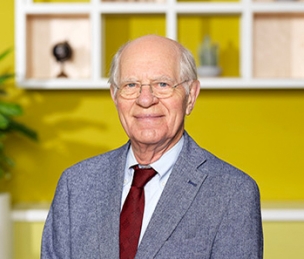Displaying 1 - 19 of 19
-
Cholin, J., & Levelt, W. J. M. (2009). Effects of syllable preparation and syllable frequency in speech production: Further evidence for syllabic units at a post-lexical level. Language and Cognitive Processes, 24, 662-684. doi:10.1080/01690960802348852.
Abstract
In the current paper, we asked at what level in the speech planning process speakers retrieve stored syllables. There is evidence that syllable structure plays an essential role in the phonological encoding of words (e.g., online syllabification and phonological word formation). There is also evidence that syllables are retrieved as whole units. However, findings that clearly pinpoint these effects to specific levels in speech planning are scarce. We used a naming variant of the implicit priming paradigm to contrast voice onset latencies for frequency-manipulated disyllabic Dutch pseudo-words. While prior implicit priming studies only manipulated the item's form and/or syllable structure overlap we introduced syllable frequency as an additional factor. If the preparation effect for syllables obtained in the implicit priming paradigm proceeds beyond phonological planning, i.e., includes the retrieval of stored syllables, then the preparation effect should differ for high- and low frequency syllables. The findings reported here confirm this prediction: Low-frequency syllables benefit significantly more from the preparation than high-frequency syllables. Our findings support the notion of a mental syllabary at a post-lexical level, between the levels of phonological and phonetic encoding. -
Hagoort, P., & Levelt, W. J. M. (2009). The speaking brain. Science, 326(5951), 372-373. doi:10.1126/science.1181675.
Abstract
How does intention to speak become the action of speaking? It involves the generation of a preverbal message that is tailored to the requirements of a particular language, and through a series of steps, the message is transformed into a linear sequence of speech sounds (1, 2). These steps include retrieving different kinds of information from memory (semantic, syntactic, and phonological), and combining them into larger structures, a process called unification. Despite general agreement about the steps that connect intention to articulation, there is no consensus about their temporal profile or the role of feedback from later steps (3, 4). In addition, since the discovery by the French physician Pierre Paul Broca (in 1865) of the role of the left inferior frontal cortex in speaking, relatively little progress has been made in understanding the neural infrastructure that supports speech production (5). One reason is that the characteristics of natural language are uniquely human, and thus the neurobiology of language lacks an adequate animal model. But on page 445 of this issue, Sahin et al. (6) demonstrate, by recording neuronal activity in the human brain, that different kinds of linguistic information are indeed sequentially processed within Broca's area. -
Klein, W., & Levelt, W. J. M. (1978). Sprache und Kontext. Naturwissenschaften, 65, 328-335. doi:10.1007/BF00368373.
Abstract
Recently, the Max Planck Society founded a new Project group for Psycholinguistics. This article reviews some of the kernel issues of the group's research program. The central concern is with the context dependency of the speaker's linguistic behavior. The process of linguistically formulating depends not only on what the speaker wants to express, but also on what has been said previously (linguistic context), and on the physical and social situation (nonlinguistic context). Special attention is paid to two context-dependent phenomena. -
Levelt, W. J. M., Sinclair, A., & Jarvella, R. J. (1978). Causes and functions of linguistic awareness in language acquisition: Some introductory remarks. In A. Sinclair, R. Jarvella, & W. J. M. Levelt (
Eds. ), The child's conception of language (pp. 1-14). Heidelberg: Springer. -
Levelt, W. J. M. (1978). A survey of studies in sentence perception: 1970-1976. In W. J. M. Levelt, & G. Flores d'Arcais (
Eds. ), Studies in the perception of language (pp. 1-74). New York: Wiley. -
Levelt, W. J. M., & Schreuder, R. (1978). Psychologische theorieën over het lexicon. Forum der Letteren, 19, 40-58.
-
Levelt, W. J. M. (1978). Skill theory and language teaching. Studies in Second Language Acquisition, 1(1), 53-70. doi:10.1017/S0272263100000711.
-
Levelt, W. J. M., Schreuder, R., & Hoenkamp, E. (1978). Structure and use of verbs of motion. In R. N. Campbell, & P. T. Smith (
Eds. ), Recent advances in the psychology of language: Vol 2. Formal and experimental approaches (pp. 137-162). New York: Plenum Press. -
Levelt, W. J. M., & Flores d'Arcais, G. B. (
Eds. ). (1978). Studies in the perception of language. London: Wiley. -
Noordman, L. G. M., & Levelt, W. J. M. (1978). The noun-verb intersection method for the study of word meanings. Methodology and Science, 11, 86-113.
-
Sinclair, A., Jarvella, R. J., & Levelt, W. J. M. (
Eds. ). (1978). The child's conception of language. Berlin: Springer. -
Levelt, W. J. M. (1966). Generatieve grammatica en psycholinguïstiek I: Inleiding in de generatieve grammatica. Nederlands Tijdschrift voor de Psychologie en haar Grensgebieden, 21, 317-337.
-
Levelt, W. J. M. (1966). Generatieve grammatica en psycholinguïstiek II. Psycholinguïstisch onderzoek. Nederlands Tijdschrift voor de Psychologie en haar Grensgebieden, 21, 367-400.
-
Levelt, W. J. M., & Plomp, R. (1966). Les dimensions dans la perception des intervalles musicaux. Sciences de l'art, 3, 172-182.
-
Levelt, W. J. M. (1966). The alternation process in binocular rivalry. British Journal of Psychology, 57(3/4), 225-238.
-
Levelt, W. J. M. (1966). Some demonstrations of the complementary functioning of the eyes. Perception & Psychophysics, 1, 39-40.
-
Levelt, W. J. M. (1966). The perceptual conflict in binocular rivalry. In M. A. Bouman (
Ed. ), Studies in perception: Dedicated to M.A. Bouman (pp. 47-60). Soesterberg: Institute for Perception RVO-TNO. -
Levelt, W. J. M., Van de Geer, J. P., & Plomp, R. (1966). Triadic comparisons of musical intervals. British Journal of Mathematical & Statistical Psychology, 19(2), 163-179.
-
Plomp, R., & Levelt, W. J. M. (1966). Perception of tonal consonance. In M. A. Bouman (
Ed. ), Studies in Perception - dedicated to M.A. Bouman (pp. 105-118). Soesterberg: Institute for Perception RVO-TNO.

Share this page